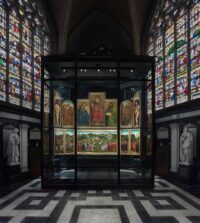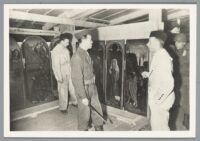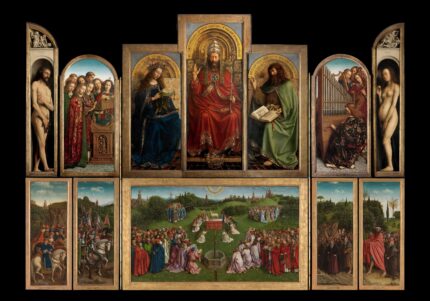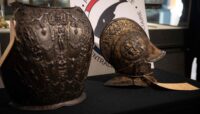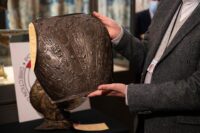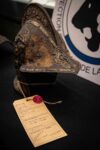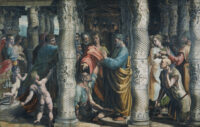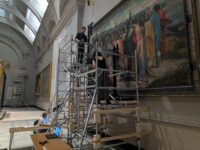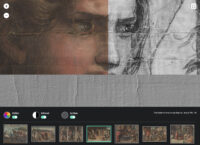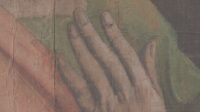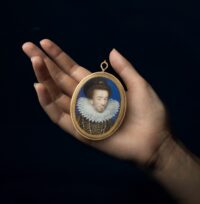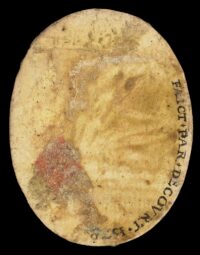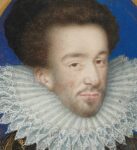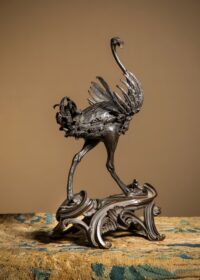 One of only three known examples of a finely chased bronze ostrich from the workshop of Renaissance master Giambologna will be sold auction next week. It was previously owned by writer, parliamentarian and avid collector Horace Walpole and has been owned by the same family since it was sold by his great-nephew along with the rest of his extraordinary collection of art and antiquities 180 years ago. The pre-sale estimate is £80,000-£120,000 ($110,000-$165,000).
One of only three known examples of a finely chased bronze ostrich from the workshop of Renaissance master Giambologna will be sold auction next week. It was previously owned by writer, parliamentarian and avid collector Horace Walpole and has been owned by the same family since it was sold by his great-nephew along with the rest of his extraordinary collection of art and antiquities 180 years ago. The pre-sale estimate is £80,000-£120,000 ($110,000-$165,000).
Citing his impressionistically modelled bronze birds created for the grotto in the garden of the Medici Villa at Castello, near Florence, in 1567, historic scholarship has attributed the ostriches to Giambologna. Indeed, other bronze models of ostriches attributed to Giambologna include an example in the Kunsthistorisches Museum, Vienna, and in the Hermitage, St Petersburg. While these examples demonstrate that the ostrich was a popular subject during the period and was clearly part of Giambologna’s oeuvre, the Austrian and Russian examples lack the drama, potency and spontaneity of movement demonstrated by the three models previously discussed. Although some sources still attribute the models to Giambologna, in recent years the scholarship has begun to diverge, with some experts now attributing the work to Giambologna’s student, and heir to his studio, Pietro Tacca (1577-1640). This pivot is in part due to the stylistic similarity observed in Tacca’s delineation of the tails of his bronze horses to the dynamic and vivacious rendering of the ostriches’ plumage.
Horace Walpole, who was as avid a documenter as he was a collector, noted in his journal that he had bought it in Paris in 1765 or 1766. It joined the rest of his vast collection at Strawberry Hill, his Gothic Revival villa in Twickenham, London. In the exhaustive 1774 inventory of Strawberry Hill, the bronze ostrich is recorded as being placed in a window between a bronze Ibis and a bronze replica of the Laocoön Group, one of dozens of fine works of art and antiquities in the first-floor Gallery. It kept company with portraits by Rubens, Van Dyck and Lely, landscapes, seascapes, busts of Roman emperors and empresses, altars, urns, antique Japanese commodes, porcelains, coins and much, much more. Walpole described it is “an ostrich, very spirited.”
His great-nephew reused the description in the catalogue of the Great Sale of Strawberry Hill in April 1842. It was listed as “a fine antique bronze of an Ostrich, very spirited in effect, on a bronze scroll stand.” It was acquired by wealthy landowner John Dunn-Gardner and his descendants are the current owners.
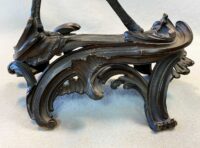 The other two known examples of this striding ostrich are now in the collections of the Louvre and the Fitzwilliam Museum. The Louvre’s is the earliest recorded example, first documented in 1689, and it also the most active and dynamic and because of this experts believe it was the latest of the three. The Fitzwilliam’s is believed to be the earliest, as it has a less pronounced S-curved neck and less dramatic plumage. The example up for auction is midway between the two in dynamism and movement, so is thought to be the middle ostrich child.
The other two known examples of this striding ostrich are now in the collections of the Louvre and the Fitzwilliam Museum. The Louvre’s is the earliest recorded example, first documented in 1689, and it also the most active and dynamic and because of this experts believe it was the latest of the three. The Fitzwilliam’s is believed to be the earliest, as it has a less pronounced S-curved neck and less dramatic plumage. The example up for auction is midway between the two in dynamism and movement, so is thought to be the middle ostrich child.
